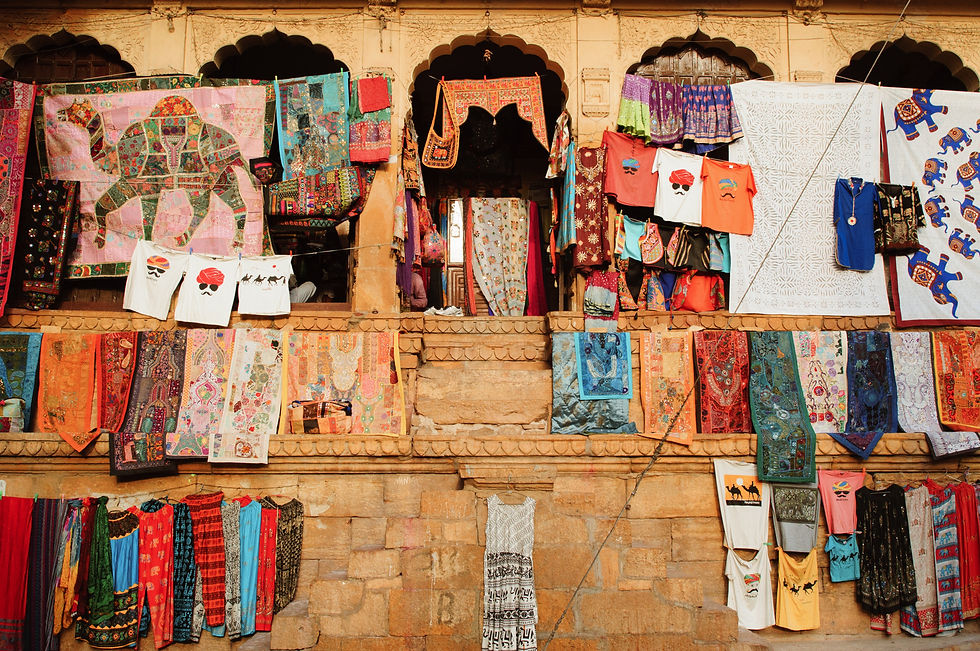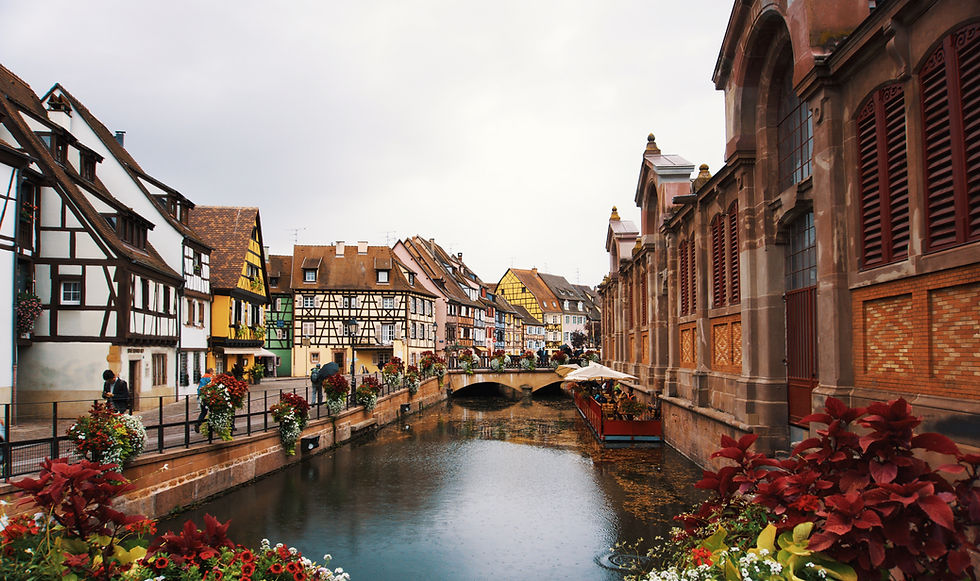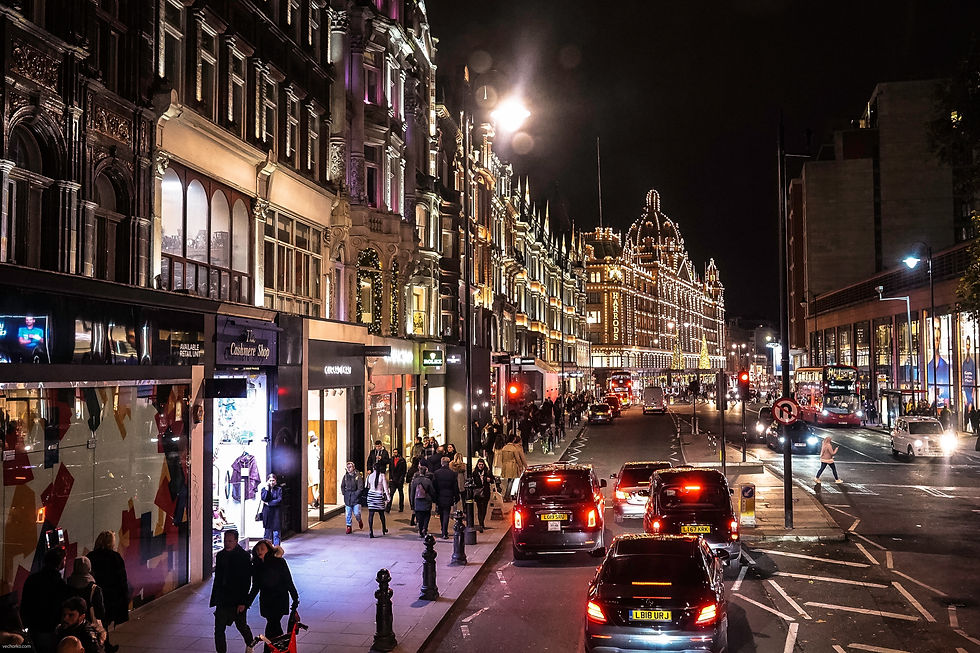The true character of any city can be explored only while navigating through its streets. Whether it’s for their historical charm, significance, picturesque vibe, or vibrant feel, discovering the true soul of a place is bound to make you stop in your tracks and admire your surroundings. Out of all the beautiful locations in this world, here are some must-see sights that are sure to have you packing your bags as you give in to your inner wanderlust.
1. Jaisalmer, India

Jaisalmer is nicknamed "The Golden City" of India, and for good reason; the city is recognized for its yellow sandstone architecture and its ravishing bazaars, such as the shopping street inside the Sonar (Golden) Fort pictured above.
2. Agueda in Aveiro, Portugal

You might have already heard about Agueda’s Umbrella Sky Project that took over social media by storm once. If not, you’ve missed out on a gem. The narrow streets get enveloped in vibrant umbrellas as the temperature rises in the city to offer a respite from the heat to the pedestrians. The result? An impeccable colourful street, which is now famous as one of the most beautiful streets in the world.
3. Lombard Street, San Fransisco

Popular as one of the most visited sites in the city, Lombard Street is a fun-filled street that looks right out of a storybook. The hairpin turns, the steep hill, and the lush greenery around makes it outshine most of the places in the world. Though, the turns were made with an aim to ensure that drivers slow down their cars while driving around this area. This 600-foot-long, red brick road is often called the "most crooked street" in the world. The one-block stretch contains no less than eight very steep hairpin turns.
4. Jacaranda in Pretoria, South Africa

Covered with blooming Jacaranda trees for most months of the year, this is certainly one of the most beautiful streets in the world that looks no less than a fairytale land. Be it driving through it or living in a house near it, you wouldn’t feel like leaving this purple paradise once you enter it.
5. Golden Lane in Prague, Czech Republic

The Golden Lane is a stunning example of a street that would leave anyone amazed who treads along it. Located in the heart of the Castle enclosure which overlooks Prague, you would have to bend your back slightly and lower your head to enter one of the typical and picturesque houses built on the street.
6. Paris, France

Paris's Champs-Élysées could well be the most famous street in the world. Beautifully manicured trees line the 1.2-mile-long avenue, which stretches from the Place de la Concorde to the Arc d Triomphe (shown). This tree-lined boulevard in Paris’s eighth arrondissement is often described as the “world’s most beautiful avenue”. It runs for just over a mile, linkng the Place de la Concorde with the Arc de Triomphe in Place Charles de Gaulle, passing through the Jardin de Champs-Élysées and its various museums and monuments, including the Grand Palais and Petit Palais. Completed in 1670, the avenue houses scores of luxury shops, cafes and theatres and is the venue for the final miles of the Tour de France cycling race and the Bastille Day military parade.
7. Colmar, France

Located in Colmar, France, near the border with Germany is one of the most charming towns in Europe. Yet, arguably the most picturesque area in Colmar can be found wandering through the streets of the Old Town. The architecture, which seems untouched by time, with its colourful timber structures, contains an Alsatian aesthetic.
8. Tehran, Iran

The majestic Alborz Mountains to the north of Tehran are placed in a perfect portrait by rows of residential buildings and the famous Tohid Tunnel (the third longest tunnel in the Middle East (nearly two miles long). Milad Tower (also referred to as Tehran Tower) is in the background as well. Scaling some 1,427 feet in the air, it's the sixth-tallest tower in the world (and the tallest structure in Iran).
9. Chefchaouen, Morocco

The streets of Chefchaouen, a small city in northwest Morocco, are famous for their different shades of blue. Founded in 1471, the city was once used as a fortress for exiles from Spain. Over the centuries, many Jews moved to Chefchaouen, bringing with them the ancient belief that using blue dye would remind people of God's power. For the most vivid experience, visitors should stroll down such streets as Al Hassan Onsar, Rue Outiwi, and the tight stairs leading up and down Rue Bin Souaki.
10. Évora, Portugal

Situated in the heart of the Alentejo region, Évora is an enchanting medieval town in Portugal. Its history is so beautifully preserved that UNESCO even calls Évora a "museum-city." Today, visitors can walk along Évora's cobblestone streets and view its cluster of museums and monuments on foot.
11. Broadway and Times Square, New York

The 13-mile Manhattan stretch of this vast street, which also runs through the borough of the Bronx for two miles, is home to Times Square, which took its name from The New York Times newspaper (it moved here in 1904, but has moved again since). In 1907 the New Year's Eve tradition, where a "ball" drops from the roof of the old Times building (now One Times Square), began, helping make the square a natural rallying location for New Yorkers (for victory parades, the mark World Series baseball successes, or protest presidential elections). It also, of the course, the city’s hub for theatre, cinema - and giant advertisements. New York City’s iconic Broadway is a renowned cultural hot spot. At 53 kilometres (33 miles) in length, it is one of Manhattan’s main thoroughfares. It’s home to dozens of theatres and hosts major parades. Times Square, tourist central, has a reputation for being the busiest place in the Big Apple. Everywhere you look, you see food kiosks, department stores, and enormous advertising screens.
12. La Rambla, Barcelona

Sally Davies, our Barcelona expert, writes: "The city's most famous street is a mile-long avenue that begins at the Columbus Monument in front of the port, and ends at the Plaça Catalunya. Recent legislation means that the stalls of caged animals and birds have been (thankfully) replaced with upmarket souvenirs and tourist information points, but the colourful flower stalls remain, as does Miró's pavement mosaic, halfway up. Dotted along the boulevard are the wax and erotic museums, the Palau de la Virreina information centre and exhibition space and, of course, the wonderful Boqueria food market. La Rambla takes on a very different character in winter and first thing in the morning, which is my favourite time to walk it."
13. Portobello Road, London

London has countless streets worth exploring, from the cobbles of Middle Temple Lane to the wide expanse of The Mall. But we're plumping Portobello Road, home to one of the capital’s most famous markets, which flogs vintage clothes and antiques and dates back to 1740. “You can visit the travel bookshop of the character played by actor Hugh Grant in the film Notting Hill - it's actually a shoe shop on Portobello Road. Just around the corner on Blenheim Crescent you’ll find the real-life Travel Bookshop, which was the inspiration behind the one in the movie,” says Sally Peck, Telegraph Travel’s family travel editor.
14. Chandni Chowk, Delhi

Whether you’re on the hunt for an eclectic gift, or just want to indulge in some quick Bengali cuisine, Chandni Chowk has what you need. The famous, bustling street in Old Delhi can get chaotic, but it's the perfect place to visit for a real culture shock.
15. Oxford Street, London

More than 300 restaurants and shops are located on this busy London street. With 2.5 kilometres (1.6 miles) of shops, it’s the longest shopping thoroughfare in Europe. People flock here to check out the window displays. The famous Oxford Circus junction is located at the corner of Regent Street.
16. Avenue Istiklal – Istanbul

Located in Istanbul’s historic district, Istiklal Avenue is a three-kilometre-long thoroughfare (1.9 miles) that is traversed by upwards of three million people each weekend. During the reign of the Ottoman Empire, it was the city’s central road. Today, for locals as well as tourists, it remains the commercial and artistic heart of Istanbul. It runs from Taksim Square to Galata Tower.

Comments